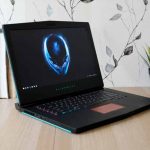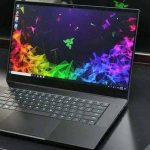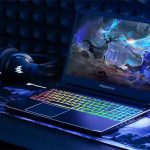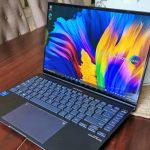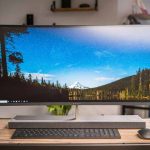Should You Buy an Old Panasonic Toughbook?
The 14” fully-rugged Panasonic TOUGHBOOK® 40 laptop breaks new ground offering unrivaled flexibility in even the most demanding and unpredictable environments with its class leading eight modular areas including its innovative modular expansion packs (xPAK’s). Optical drives, authentication readers, IO ports and even the Barcode Reader xPAK are all user upgradeable. Its state-of-the-art design optimizes thermals for maximum performance and its latest technology will ensure the TOUGHBOOK 40 will withstand the test of time
Does Panasonic still make Toughbooks?
Panasonic, now known as Panasonic Connect, is no stranger to making the world’s most rugged laptops. But what the company was missing in its lineup was a modern, fully rugged Windows 11 PC that also adopts its new xPAK modular strategy.
Today, Panasonic is fixing that gap in its lineup with the new Toughbook 40. It’s a massive, 7.4lb (3.37kg) 14-inch Windows 11 PC that is likely the most rugged laptop on the planet. Aimed at military use, federal agencies, law enforcement, fire/rescue, and utility companies, the Toughbook 40 can withstand multiple 6-foot drops and meet rigorous MIL-STD-810H, MIL-STD-461H, C1D2, and IP66 ratings.
Are the Panasonic Toughbooks any good?
For the past couple of years, Panasonic was focused on evolving its offerings to include rugged tablets and a more modern 2-in-1 style laptop. Cayes said his clients wanted to see a return to form with a new clamshell offering. “They just love the idea of that traditional design and didn’t want to see it phased out,” he said. In an interview with CRN, Panasonic’s Craig Jackowski, general manager of product management, said the new laptop is the best Panasonic has ever produced. “In the Toughbook world, it’s all about the overall solution,” he said, adding that the channel has been a huge part of the company’s success in the rugged space. “Our business doesn’t go anywhere without our partners.”
Panasonic has added the best available connectivity options as well, with multiple cellular and connectivity options, including a 4G or 5G modem and speeds up to 5.5 GBps. “The Toughbook team is laser-focued on supporting the mission-critical jobs of our customers who work in the most extreme environments and the new Toughbook 40 provides them with the perfect balance of performance, modularity, durability and innovation,” Jackowski said in a statement.
Jackowski said Panasonic wanted to focus on “extreme” characteristics of the new device – extreme use, extreme environments, and extreme specifications. The Toughbook 40 ships loaded with an Intel 11th Gen vPro processor, packing plenty of punch for any applications. He said the computer is built to stand up to years of abuse – so modularity was an important feature. “Over that extended period of time, our customers have a device that can change as their business changes or as their work needs change,” he said. Cayes said customers have already started reaching out to secure Toughbook 40 units. “The Toughbook market is very niche, and this is exactly what those customers wanted”.
The Panasonic Toughbook 40 Features
The Panasonic Toughbook 40’s thick magnesium-alloy build means this device was built to work in the field and in harsh outdoor environments. The latest model in the series is IP66 certified and meets a number of US military standards, allowing it to withstand multiple drops from 6 feet. It also supports Panasonic’s modular xPAK system, giving users access to multiple expansion slots for a total of 70 different configurations.
The 2.1″ (53.3 mm) thick Panasonic Toughbook 40 produces a rugged 3.35 kg (7.4 lb) laptop that is highly configurable and modular, making it an ideal digital companion for the demanding military, law enforcement or utility companies. . working conditions.
This new model is a Windows 11 secure center device that provides advanced firmware-level security features from Microsoft and its partners to protect against data theft and sophisticated attacks. Under the hood is an 11th-generation Intel Core i5 or i7 vPro chip with 16GB of RAM (2 x DIMMs upgradable to 64GB) and a fast 512GB SSD upgradeable to 2TB.
An optional AMD dedicated GPU will be available in the future. However, at launch, users can choose the Intel Iris Xe iGPU instead of the slower UHD variant to power the 14-inch FHD touchscreen. Featuring automatic sensing of various input methods such as pen, fingers, gloves and wet hands, this panel can reach a peak brightness of 1200 lumens for easy reading in direct sunlight.
Where the Toughbook 40 really shines is its configurability. In addition to the battery, memory, storage, and user-replaceable keyboard, Panasonic’s modular xPAKs provide access to four additional expansion slots where users can add more battery capacity or storage, as well as other devices such as optical drives, authentication drives, and more. /O (VGA, D-sub).
How do Panasonic Toughbooks look like?
From the outside, the Toughbook 40 looks like most other Toughbooks: You get a magnesium alloy chassis with a handle, lots of ports, and a familiar design. But where the Toughbook 40 veers from the Toughbook 55 is thickness and size, coming in at 2.1-inches thick (53.3mm). By comparison, that’s almost five Samsung Galaxy Book S laptops (11.8mm) stacked on top of each other.
All that size, however, is put to good use. Like more recent Toughbooks, the Toughbook 40 adopts Panasonic’s new xPAK modular technology. The concept behind xPAK is simple: Four multiple bays can house swappable expansion abilities like adding a Smart Card Reader, DVD drive, or barcode reader. Customers can also repair or replace the battery, memory, storage, and keyboard with a simple screwdriver.
Panasonic Toughbooks Price
The Panasonic Toughbook 40 will be available in late spring with a $4,899 starting price. That’s more expensive than even some other Toughbooks, but Panasonic isn’t aiming this machine at everyday users who would buy an XPS 13 or MacBook Pro — it’s meant for on-site staff, first responders and military personnel who may need to work in very unforgiving conditions.
By retaining control of design, sourcing, manufacturing and fabrication, Panasonic obtains the highest level of quality, reliability and performance for its customers. This in turn results in lower total cost of ownership and greater return on investment for buyers of Panasonic computer and tablet products.
Toughbook mobile computers are used in a wide variety of industries, including construction, defense, emergency services, government, healthcare, law enforcement, manufacturing, oil, gas, telecom, and utilities.
The Panasonic TOUGHBOOK range sets the industry standard for ruggedised laptop PCs used by automotive, defence, emergency services, forklift, transport & logistics, manufacturing, utilities and other key vertical markets. Durable devices that represent the latest in 25 years of product development and delivery.
The Toughbook, introduced in 1994 with the CF-41, is designed to withstand vibration, drops, spills, extreme temperature, and rough handling.
Also read:
- The Best Antivirus For PC Gaming: Bitdefender, Norton, Kaspersky & More…
- LG UltraGear 3 New Gaming Monitors: Are they designed for gaming? Which one is the best?
- What is the best wireless gaming headset? How to choose these headsets?
- Best DDR3 RAM For Gaming in 2022? How to Pick and Test Them? Are They Good for Gaming?
- The Best Dell Gaming Laptops: Are they good for gamers?
